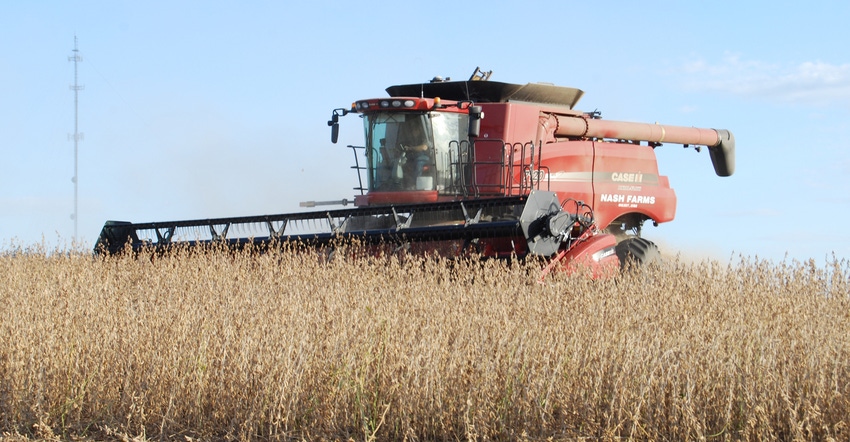September 18, 2018

The lion’s share of payments under the new Market Facilitation Program are going to pork and soybean producers. Given the most recent USDA production estimates, Iowa producers stand to gain more than $550 million from this program.
The MFP will be administered by USDA Farm Service Agency offices; the deadline for sign-up is Jan. 15. The MFP payments have a $125,000 cap per person or legal entity, but the cap works separately between crops and livestock. The cap for crops is combined, summing producers’ MFP payments from all five of the crops: corn, cotton, sorghum, soybeans and wheat.
Production evidence needed
The first MFP payment — on half of the 2018 production — would be provided once a producer provides actual production (producer’s share) for a crop, indicates the source of production evidence, and then signs and dates the MFP application form CCC-910.
A second MFP payment isn’t guaranteed this winter, as that decision will be made by USDA after Dec. 3. If it is determined that the international trade disputes are still damaging U.S. commodity markets, USDA will compute MFP payment rates, based on the damage estimates at that time. This payment rate would apply to the remaining 50% of production not covered by the initial payment.
The current MFP payment rate for corn is 1 cent per bushel, so the corn payment won’t have a major effect on producers’ crop revenue. However, the payment rate on soybeans is $1.65 per bushel. Assuming a 50-bushel-per-acre soybean yield times 50% of production times $1.65 per bushel, it equals more than $40 per acre. Should your final yield be 60 bushels per acre, that first MFP payment would be $49.50 per acre. Remember, there could still be a second payment triggered after Dec. 3 if tariff and trade disputes continue.
Soybean harvest strategy
Soybean production is expected to wrap up well before corn production for most Iowa producers. To receive the first MFP payment on soybeans in a timely fashion, you’ll need to keep good records both during and immediately following harvest. With many producers facing cash flow challenges this fall, these MFP payments could be a timely and significant source of revenue to meet cash flow needs.
Consider submitting your production evidence to your crop insurance agent as soon as soybean harvest is complete. This could provide a “second set of eyes” for determining the actual production number for soybeans on the FSA form. Most producers will use production evidence from their crop insurance records and note the USDA Risk Management Agency as their primary source of production evidence.
For crop insurance purposes, keep actual production separate by farms in a section, or “optional units.” Using the same production evidence for both FSA and RMA purposes should reduce reporting errors since production evidence is subject to spot-check by both USDA agencies.
Don’t delay submitting soybean data
This strategy could then trigger the first MFP payment on soybeans much quicker than waiting to compile both corn and soybean production after harvest is complete for both crops.
Since your crop insurance agent already has your soybean production evidence, the potential for a Revenue Protection crop insurance indemnity claim could also be determined. Remember, the 2018 spring projected price for soybeans was $10.16 per bushel. The harvest price will be known by Nov. 1 and multiplied times actual production to determine a potential indemnity payment. For income tax purposes, an MFP payment, and usually a crop insurance indemnity payment, are taxable in the year proceeds are received.
For more details on these programs, along with information on how to apply, see USDA’s Trade Retaliation Mitigation website.
Johnson is an Iowa State University Extension farm management specialist. He can be reached at [email protected].
About the Author(s)
You May Also Like






